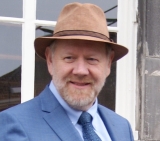Management Methods < Previous page Next page >
The main Management Methods designed by Roorda are shown on this page. They are all scientifically validated; and they are applied by companies & NGOs, by universities & schools, and by individual professionals. Several of them have been used hundreds of times in many countries on four continents.
Click on an image to go to the associated page.
Future Focused Entrepreneurship | FFEA: The details | The FFEA Extensions |
The FFEA system, currently only available in Dutch, is a strategic instrument for all kinds of organizations to discover if they are prepared for the future - and if not, how to increase the chances for survival. RESFIA+D This method is also called "The Seven Competences for Sustainable Develop-ment". It is applied as an instrument for professional development and HRM. Universities and Colleges apply RESFIA+D for the (re)development of competence profiles and curricula of BSc and MSc programs. | More detailed information about FFEA is available here. You will learn about its structure and about the way in which it it is applied. AISHE A method for Universities and Colleges The "Assessment Instrument for Sustainability in Higher Education" is used as a strategic method for the implementation of SD. | Roorda developed many smaller tools, such as: scans, workshops, forums, serious (computer) games. SD Curriculum Scan A method for Universities and Colleges The Scan is a method that maps the SD contents of a study program in a systematic way. As a result, not only the contents but also their relations become visible structurally, and "white spots" are discovered, as a first step towards curriculum improvements. |






